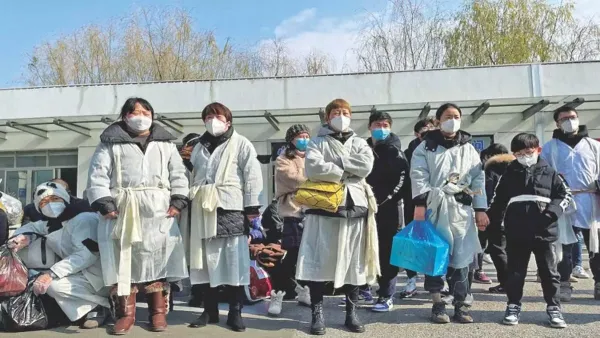
CHENNAI Chennai: When the Covid-19 pandemic broke out in the year 2020, the earth came to a standstill, halting human interactions across the world. Fortunately this time history will not repeat itself, as the medical fraternity is far more prepared to stop the global spread of human metapneumovirus (HMPV), which threatens to wreak havoc on breathing populations. However, cases of HMPV in China Media reports on the rise in cases and social media messages are reminiscent of 2020, when COVID-19 infections originated in China's Wuhan province.
Scenes of overcrowded hospitals with reported cases of HMPV have been a cause for concern in neighboring countries, especially India. However, health officials in China and the Union Health Ministry said the situation was under control, advising people not to panic. While China has reported an increase in respiratory illnesses due to HMPV, the Union Health Ministry reported no increase in influenza cases or any other winter respiratory diseases.
What is HMPV?
Human metapneumovirus, another flu-like virus with influenza-like symptoms, was discovered in 2001 in nasopharyngeal aspirate samples from children with respiratory infections caused by unknown pathogens. Serological studies have shown that it has been in existence for at least 60 years, recognized as a common respiratory pathogen worldwide. HMPV belongs to the Pneumoviridae metapneumovirus genus, which is an enveloped single-stranded negative-sense It is RNA virus. It can be diagnosed through a rapid antigen test or polymerase chain reaction (PCR)
transmission
Like the common cold and flu, HMPV spreads primarily through droplets or aerosols produced by coughing and sneezing. It can spread through close contact with infected people and exposure to virus-contaminated environments.
According to the Chinese Centers for Disease Control and Prevention (CCDCP), the incubation period after infection is about 3-5 days. Becoming infected with HMPV puts patients at risk for recurrent infections. HMPV can be detected throughout the year, but detection rates are highest during winter and spring. Additionally, HMPV infection can also cause outbreaks. However, unlike COVID-19, HMPV is considered a winter disease and an increase in cases is more common in cooler temperatures.
at risk individuals
HMPV infection is reportedly more common in children under 14 years of age. Immunocompromised populations and the elderly are also susceptible and may become co-infected with other respiratory viruses. Symptoms include cold, cough, fever, nasal congestion, wheezing and shortness of breath, as well as bronchitis and pneumonia. There may also be possible complications. A September 2023 Lancet report titled 'Neutralizing antibodies against human metapneumoviruses', suggests that the global prevalence and seasonal distribution of hMPV is similar to that of most respiratory viruses. Children under 5 years of age are the primary target population, while infants under 12 months of age are at high risk of severe infection.
It is estimated that HMPV may cause more than 14 million people to suffer from acute lower respiratory infections and cause death in a ratio of 1:1000. Such deaths in children under 5 years of age are caused by HMPV every year. Another 2021 report by Lancet Global Health said that 1% of deaths to acute lower respiratory infections in children under 5 years of age may be due to hMPV.